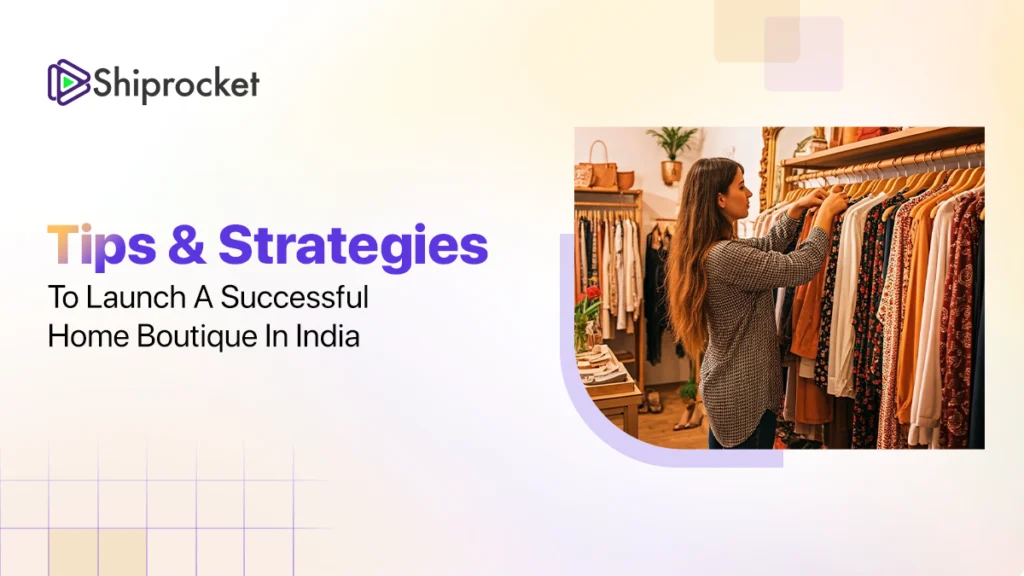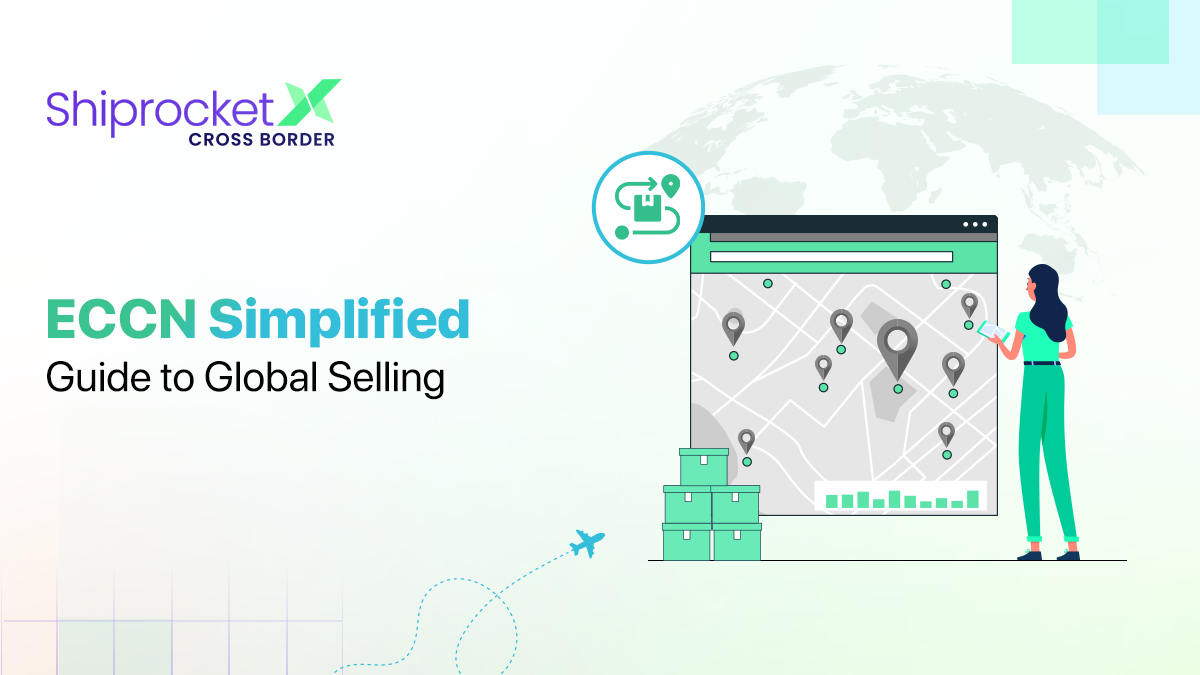Dreaming of turning your love for fashion into a business but hesitant about managing a full-scale boutique? Starting a boutique from home in India is feasible and a great way to enter the fashion world without a substantial upfront investment. With the boom in online shopping, reaching customers across India has never been easier.
This guide will provide essential tips and strategies on how to start a boutique from home in India. With a keen eye for trends and a bit of creativity, you can turn your passion into a profitable venture right from your own home.

How to Launch Your Online Boutique Brand: Essential Steps
An online boutique offers clothes, accessories, and more tailored to a specific audience. You don’t need a massive budget or extensive experience to begin. Many home-based online boutiques start with just a couple of lakhs and focus on personal shopping experiences or selling specialised items. Starting an online boutique brand is an exciting journey filled with creativity and opportunity, but it requires careful planning and a clear strategy. Here’s a detailed guide on how to start a boutique from home in India.
1. Find Your Fashion Niche
Your niche is the essence of your brand. Choose a niche that excites you and meets a specific market need. Instead of following fleeting trends, consider your passion and expertise. Are you obsessed with vintage fashion or eco-friendly pieces? Or maybe you have a talent for curating plus-sized clothing? Focus on what genuinely interests you.
Conduct some basic research to find a niche that fills a market gap. Look for trends and identify what’s currently missing. Use tools like Google Trends or explore other online boutiques to see where there’s potential. Remember, a niche doesn’t just mean a type of clothing; it could target a specific customer base like new moms, college students, or young professionals looking for sustainable options.
2. Understand Your Target Market
Identifying your target market is crucial. Who are you selling to? What do they need? Find a problem within that group and offer a solution through your products. Create detailed customer profiles to understand their preferences, from styles to colours and fits. For instance, selling vibrant, funky clothing might not succeed in a family-oriented community, but it could thrive online, reaching out to young, fashion-forward shoppers nationwide.
Choose a market segment you can serve well without the vast resources of a big reseller. Understand your customers’ shopping habits and preferences, and use that knowledge to build your inventory. This will help you build a loyal customer base that resonates with your brand.
3. Identify Market Gaps and Opportunities
Once you have defined your niche, explore further to find out the gaps in the eCommerce market. Are there certain styles or types of products not well-represented? Are there groups of customers that aren’t being adequately served? This could be your chance to introduce something new.
Conduct thorough online research to spot these gaps. Look at what your competitors are offering, check out fashion forums, or use online tools to see what potential customers are searching for. By identifying and filling these gaps, you can position your boutique as a unique destination that offers something no one else does.
4. Develop an Effective Business Plan
Your business plan is your blueprint for success. It doesn’t have to be long or overly detailed; a simple outline can be just as effective. Start by clearly defining what you plan to sell and who your ideal customers are. Outline your marketing strategy—how you will create buzz about your brand—and include a rough financial plan that covers costs like website creation, inventory, and packaging.
This plan keeps you focused and provides a guide when challenges arise. It’s also essential if you need to secure funding, as it helps convince potential investors that you’re serious about your business.
5. Create Your Product Line
This step is where your boutique starts to take shape. If you’re a designer, this is your chance to bring your ideas to life. Start small, with a few signature pieces, and gather customer feedback to refine your offerings. Alternatively, if you’re more of a curator, source unique items that fit your niche. Build relationships with reliable suppliers, whether through online marketplaces or trade shows.
Always prioritise quality. Test products yourself, order samples, and be selective about what is sold in your store. Customers expect their purchases to be worth their money, and this focus on quality will help build a strong reputation for your boutique.
6. Develop a Strong Brand Identity
Your brand is more than a logo; it represents every aspect of what you offer. Think about the emotions you want your boutique to evoke. Is it fun and playful, luxurious and sophisticated, or eco-friendly and earthy? Knowing this helps you create a brand that speaks to your target customers.
Design a simple, recognisable logo that hints at the style you offer. Choose a colour palette that stands out and use it consistently across all your channels—website, social media, and packaging. Every detail should reflect the brand vibe you want to project.
7. Set Competitive Pricing
Pricing is a balancing act. You need to cover your costs and make a profit while offering value to your customers. Start by calculating all expenses, including production, packaging, shipping, and platform fees. Research what other boutiques in your niche are charging and decide on a pricing strategy that works for your target market.
Understand your customers’ spending habits and adjust accordingly. For example, young professionals might spend more on statement pieces, while new parents might prioritise quality and durability over cost. Remember to account for any added value your boutique offers, such as exclusive designs or premium materials.
8. Build Your Online Store
Your online store is your virtual boutique window, so it must be visually appealing and easy to navigate. Platforms like Shopify, Wix, or Squarespace offer user-friendly templates and tools that simplify setting up an online shop. Focus on creating a clean, engaging design that reflects your brand identity. Include features like easy browsing, secure payment options, and customer support to ensure a smooth shopping experience.
Alternatively, you can list your products on larger marketplaces like Amazon or Flipkart to gain immediate exposure. However, this comes with the downside of competition and additional fees. Decide what works best for your boutique’s growth strategy.
9. Have a Shipping Strategy
Shipping can make or break customer satisfaction—research various carriers to find one that offers a good balance between speed, reliability, and cost. Consider integrating tools like Shiprocket, which offers automated shipping solutions and enhances post-purchase experiences.
A solid shipping plan can enhance customer experience and reduce cart abandonment rates. Customers don’t like surprises when it comes to shipping costs or delays. Ensure your shipping options are transparent, reasonable, and aligned with the needs of your target market.
By following these steps on how to start a boutique from home in India, you’ll be well-equipped to create a brand that can thrive and grow.
Proven Tips for Building a Successful Boutique Brand
Creating a successful boutique brand is more than just selling clothes; it’s about building a unique identity that resonates with your customers. Here are some proven tips to help you stand out in the competitive world of fashion.
Exceptional Customer Service
Online shopping can sometimes feel impersonal, so provide outstanding customer service. Respond to inquiries quickly and genuinely—whether through emails, social media, or comments. Including a handwritten thank-you note in orders adds a personal touch that leaves a lasting impression. These thoughtful gestures help create loyal customers.
Customer satisfaction is crucial for a boutique’s success. Every interaction should be smooth and enjoyable from when a customer visits your website to when they receive their package. Happy customers are your best marketers.
Invest in High-Quality Visuals
To make your products stand out, invest in quality images. Even with the best branding and marketing, your products need to shine. Clear, attractive photos are essential for online sales. Use professional photography to showcase your items in the best light. If hiring a photographer is outside your budget, consider doing it yourself.
Use good lighting, choose a clean background, and get creative with styling. You can also use friends or local models to bring your products to life. Your product photos should make customers feel like they can reach out and touch the fabrics. They should evoke the desire to buy your clothes and show the unique qualities of each item.
Build a Strong Social Media Presence
Marketing doesn’t stop once you launch your boutique. Create eye-catching social media content like reels or videos, run contests, or host live shopping events. Stay active on social media platforms. Share updates, behind-the-scenes content, and styling tips to keep your audience engaged.
Optimise your website for search engines to attract high-intent buyers. Consider using Google Ads or Facebook Ads to reach a wider audience. Offering exclusive promotions or early access to new collections can make them feel valued and keep them coming back. Keep your brand fresh in customers’ minds with creative and consistent efforts.
Become a Niche Specialist
Position your boutique as the expert in your niche. For example, if you specialise in vintage-inspired fashion, your brand should be the first one that people think of when they need that style. Share fashion tips like “Creative Ways to Style a Maxi Dress” or “Must-Have Sustainable Brands.”
Share your knowledge through engaging content like blog posts or social media tips. Collaborate with influencers who are popular with your target audience. Send them products for review or invite them to exclusive events. This can also help increase your credibility and reach.
Conclusion
Learning how to start a boutique from home in India is just the beginning. Focus on finding the right niche, connecting with your customers, and continuously improving your offerings. The secret to success is the timely and efficient delivery of products. Using platforms like Shiprocket, which provides quick delivery, COD remittances, and real-time tracking, helps simplify operations. Don’t be discouraged by competition; adapt and grow with each experience. Stay passionate, be strategic, and, most importantly, enjoy the journey of bringing your fashion dreams to life.





